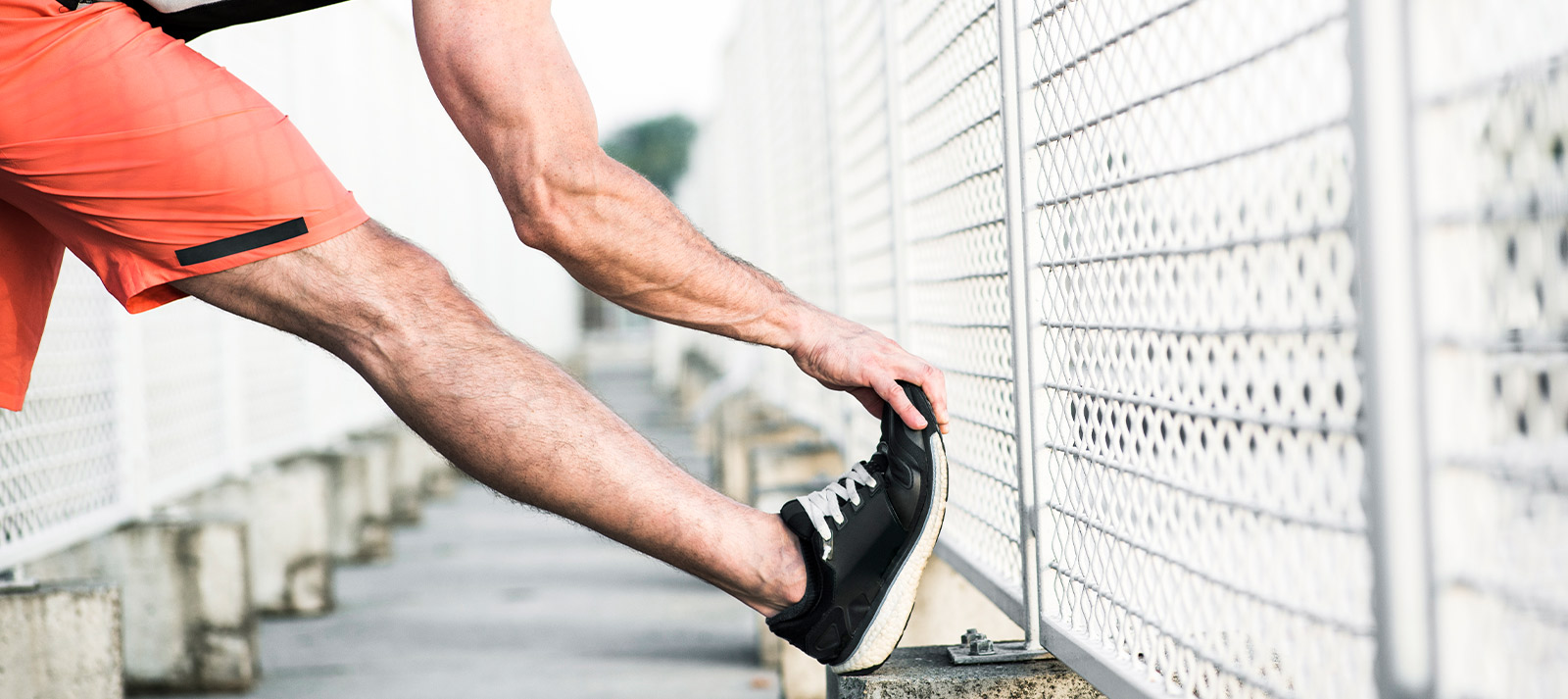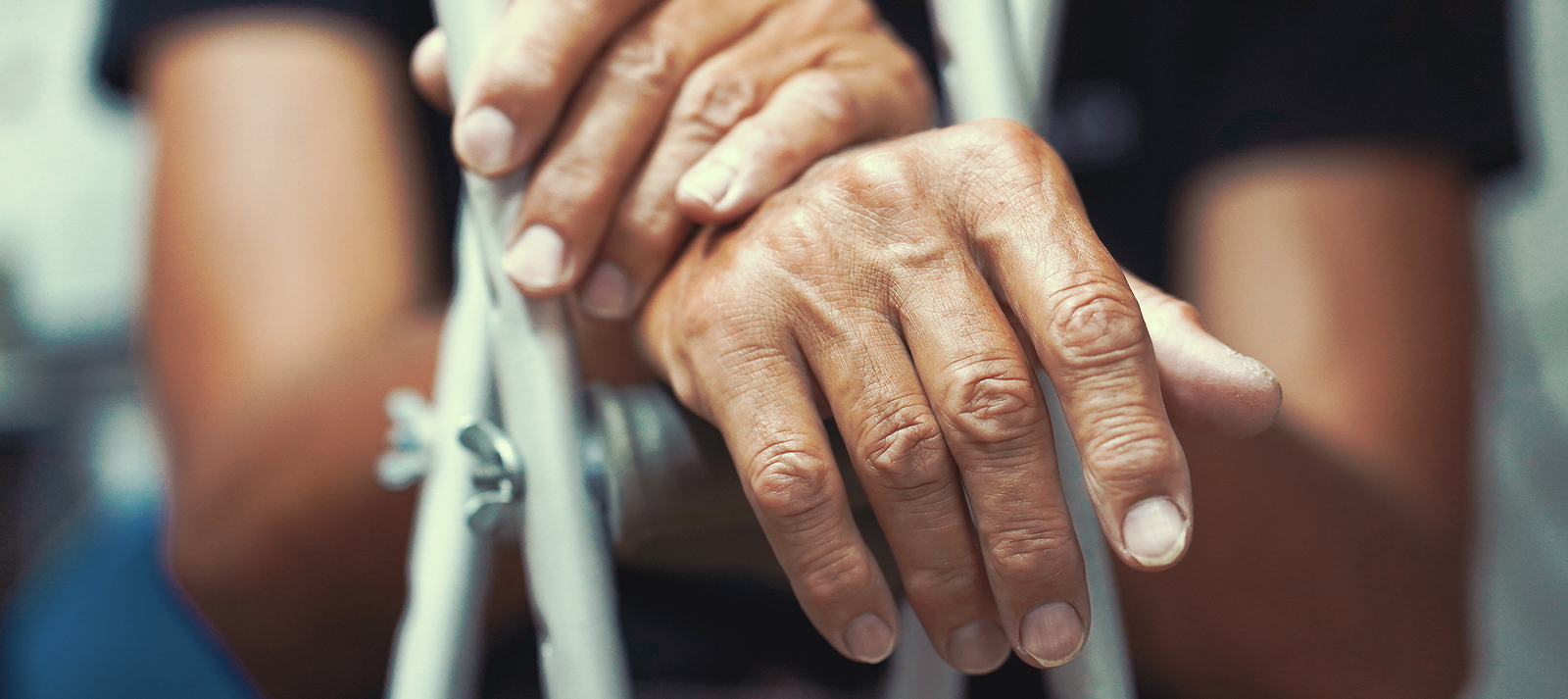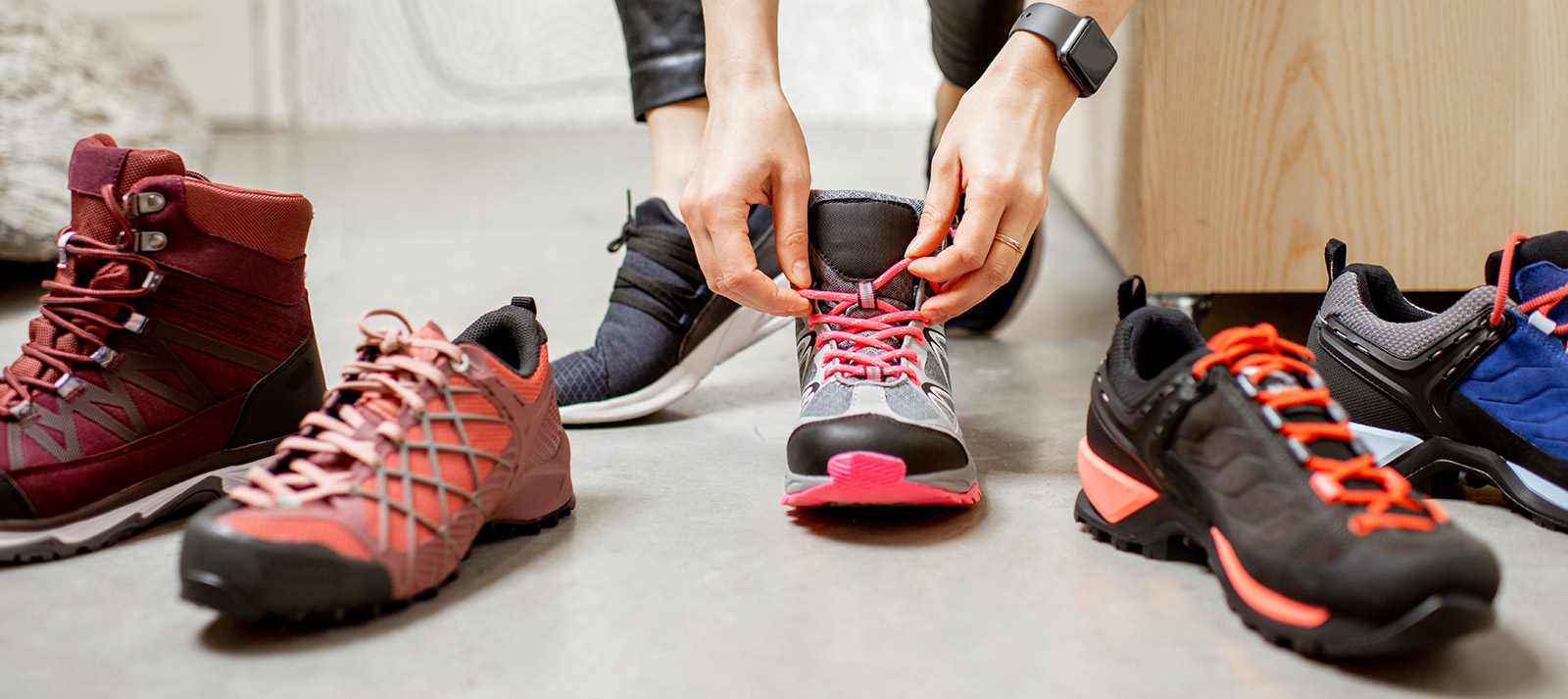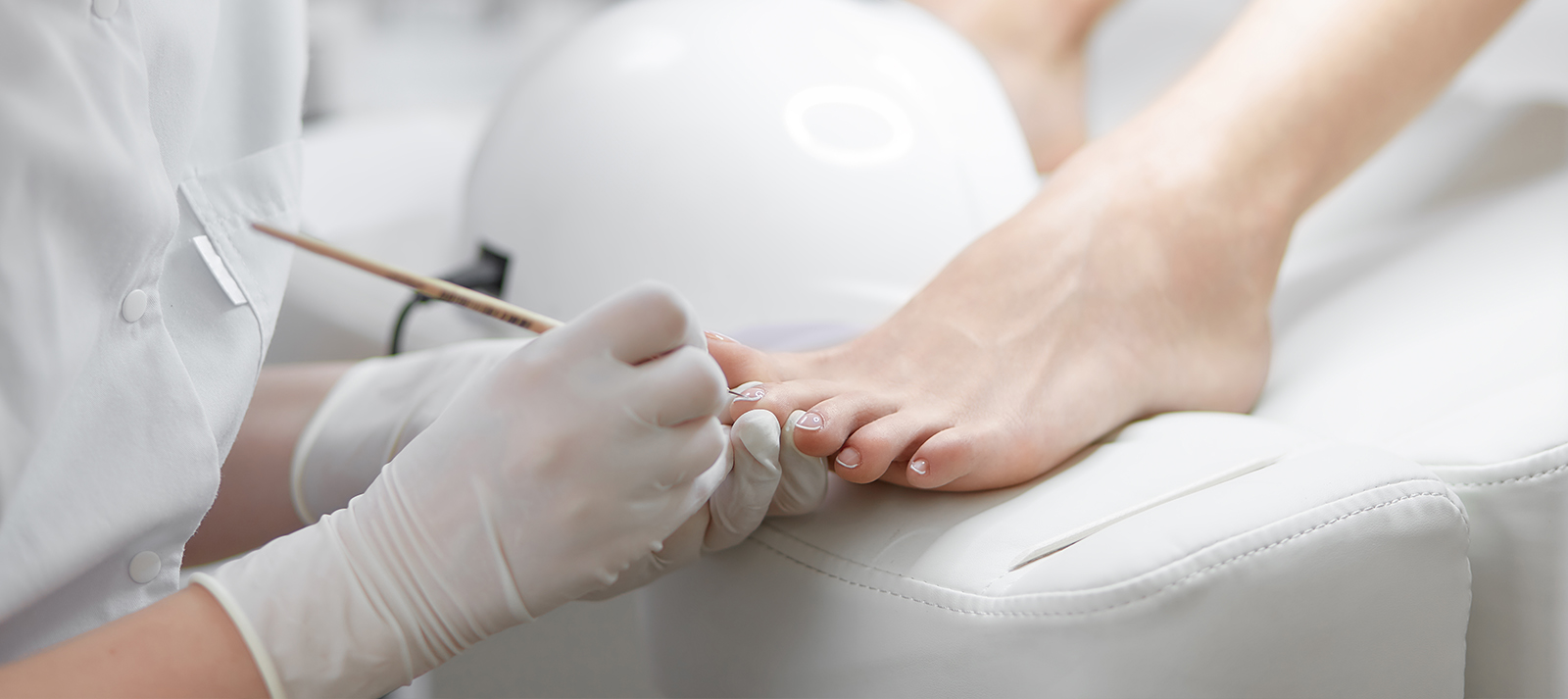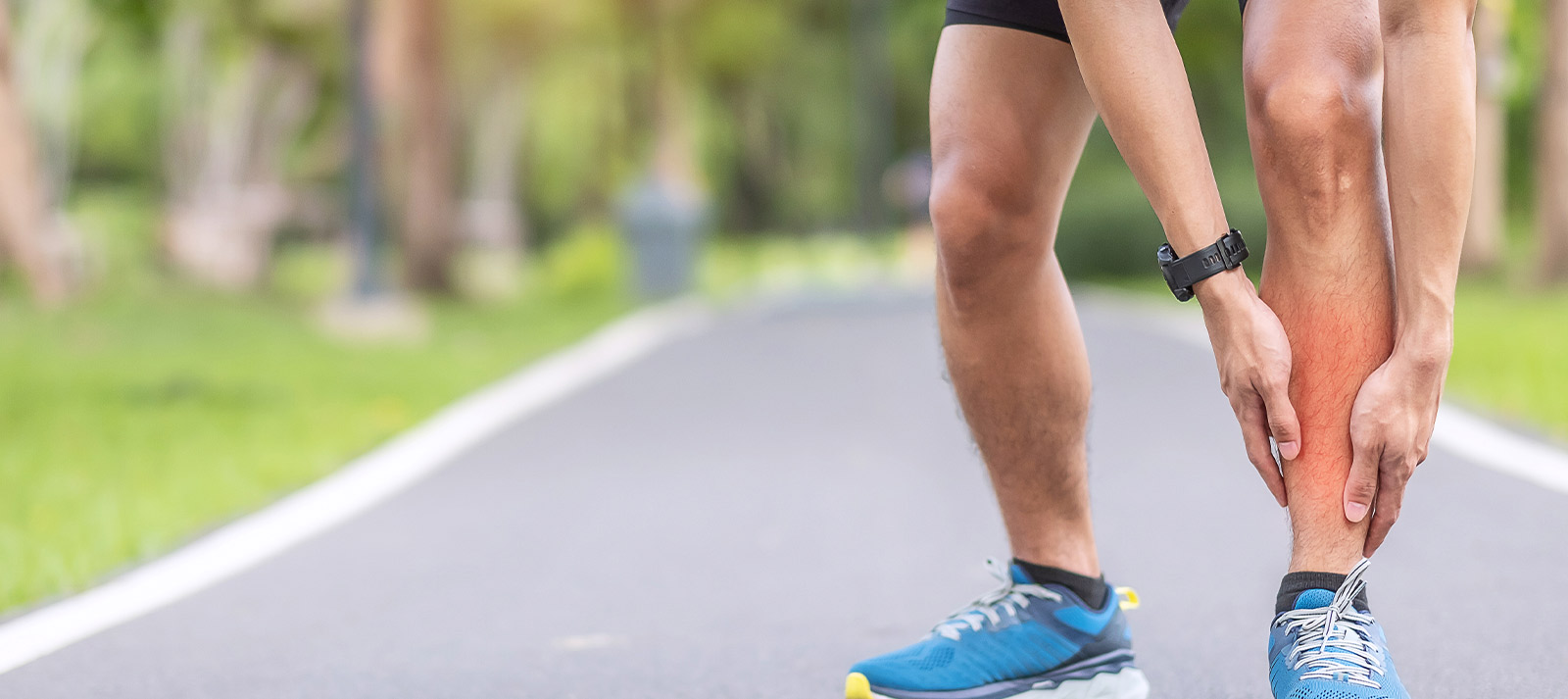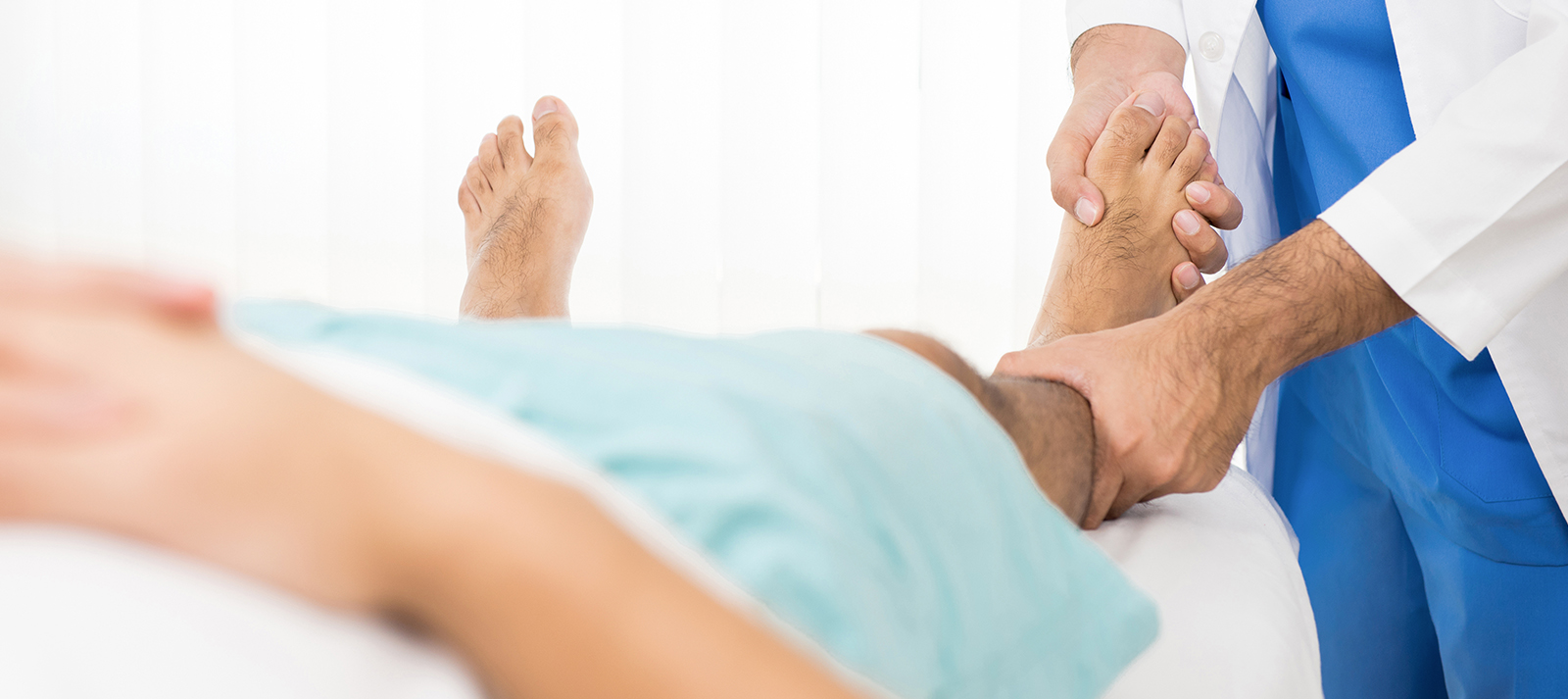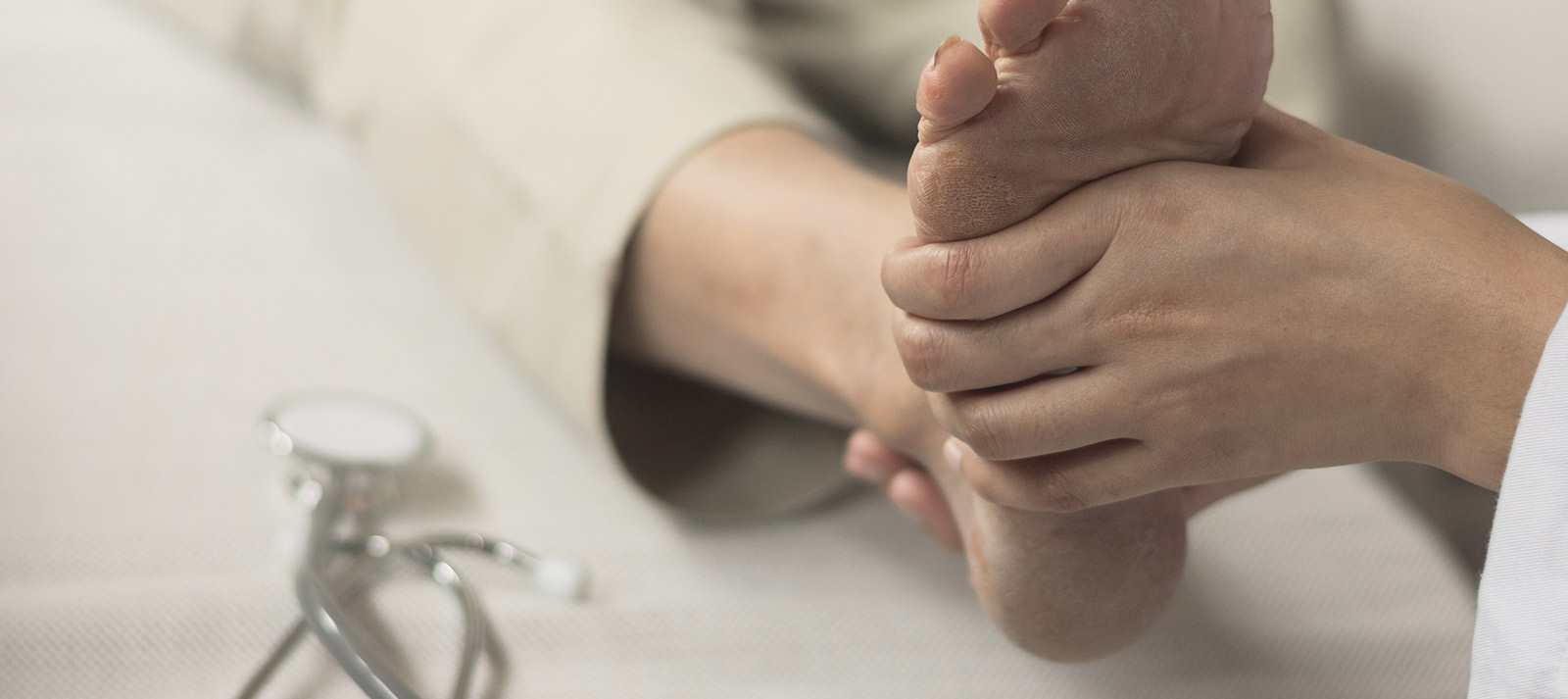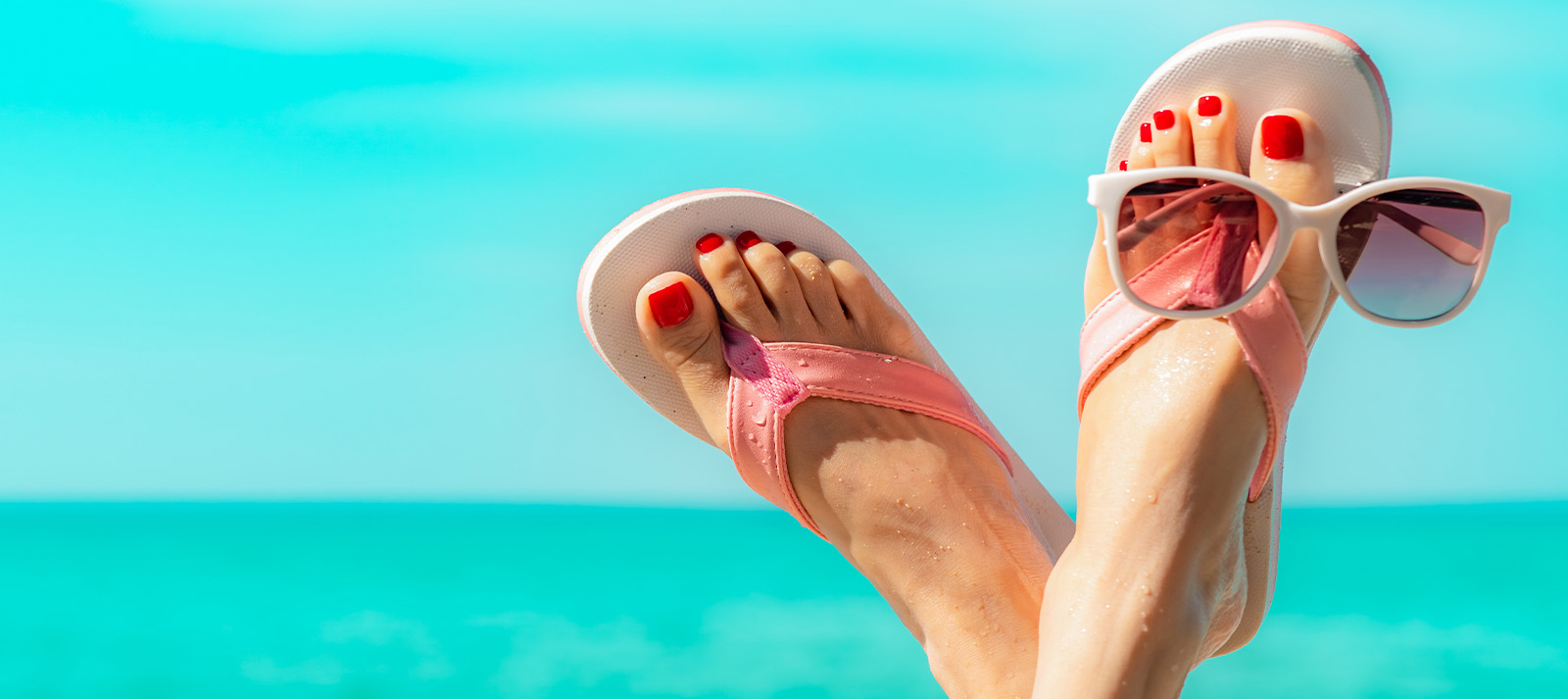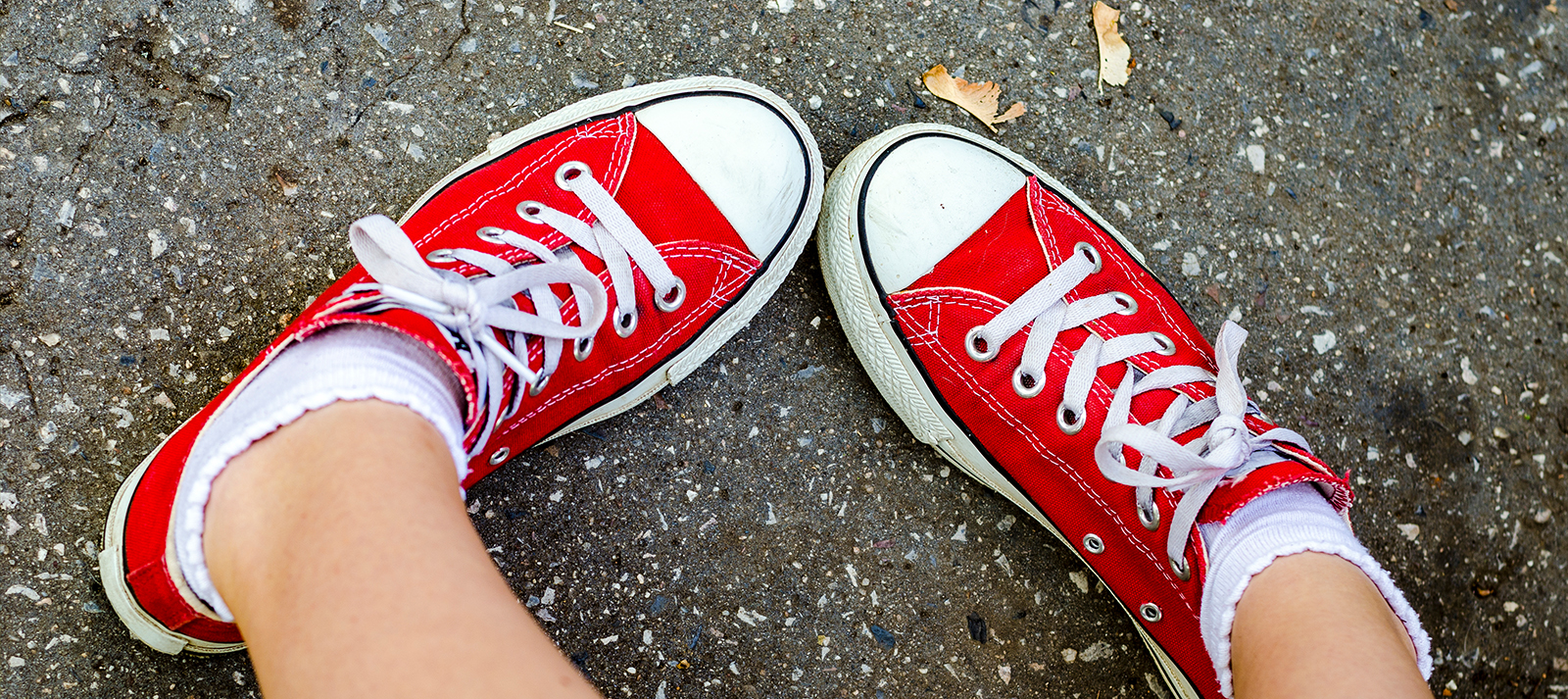Tapping Into Torsion | The Rotational Power Of The Achilles Tendon
Tapping Into Torsion | The Rotational Power Of The Achilles Tendon
Source: Barefoot Strong Blog
“Power lies within the transverse plane. We have all heard this concept at one point or another throughout our education or training career. From the rotational moment of the trunk to generate power when throwing a javelin to the torque created from supination of the foot into the external rotational power of the glutes – rotational moments are in every aspect of human movement. The closer we look at the fascinating human body and the fascial system, the more we can find that spirals and rotations are everything and everywhere!” – Dr. Emily Splichal
As Dr. Emily Splichal explains, “the achilles tendon is the largest and strongest tendon in the human body. “Formed by the gastrocnemius and soleus tendons (and sometimes plantaris), this fascinating structure is able to generate most of the elastic energy return during dynamic movement and from an evolutionary perspective is a critical structure in the spring-mass theory of movement efficiency. Now there are a few unique characteristics of the Achilles tendon that must be appreciated when training or rehabbing this structure.”
The EBFA Global confirms the power of the largest and strongest tendon in the human body:
- The Achilles tendon is not one tendon but rather a stacked tendon
- 2/3 of the Achilles tendon is made of soleus fibers
- The Achilles tendon medially rotates toward its insertion
- This rotation places the soleus fibers to the medial calcaneus
- While the MG / LG insert towards the lateral calcaneus
To learn more about the fascinating functional foot and the four functional applications:
- Soleus Equals Power
- Resupination of the Foot through Plantarflexion
- Restriction of Blood Supply
- Non-Uniform Achilles Stress by Pronation
Please read the full article here and Dr. Emily Splichal’s book, Barefoot Strong.
Explainer: How Diabetic Foot Disease Can Lead To Amputations And Even Death
Explainer: How Diabetic Foot Disease Can Lead To Amputations And Even Death
Source: The Conversation
People with diabetes are prone to foot disease, which can lead to amputations and even death. Australia has the second-highest rate of lower-limb amputations in the developed world – with the rate having risen by 30% over the past decade.
This is because as rates of type 1 and 2 diabetes increase, so do the very common related problems of foot health – known as Diabetes-Related Foot Disease (DRFD).
Five-year survival rates for those with diabetic foot problems are lower than for prostate, breast and colon cancer, yet the severity of the problem isn’t widely recognized.
If you are one of the estimated one million Australians with diabetes, paying close attention to your foot health could save you from serious, sometimes devastating complications.
How does diabetes cause foot disease?
The most common type of foot disease related to diabetes, affecting up to a quarter of diabetes sufferers, is foot ulcers. These are actually a big financial burden as well. Of the US$116 billion allocated for diabetes care in the United States in 2007, one-third was directed to treat foot ulceration. Here’s why it happens.
Diabetic skin contains less of the structural protein collagen than normal skin. This means it becomes fragile, stiff and more prone to breaking. So a diabetic is more likely to experience injury and poor wound healing.
Diabetes also increases a person’s risk of developing poor blood circulation by up to four times. Stiffer blood vessels restrict blood supply to tissues in the body. When circulation is poor, injuries such as cuts and blisters are less able to heal and more likely to become infected or turn into ulcers.
Wounds related to diabetes most commonly happen on the extremities (feet and lower legs) because these areas are the first to lose feeling and blood supply. The forces of walking and pressure from footwear can also cause damage to the tissues in these areas.
Once a wound has occurred, abnormalities in diabetic cells also prevent healing in the usual way. Although a diabetic’s wound usually contains the cells needed for it to heal, these are often not present in the right amounts or at the right time.
The longer the wound remains unhealed, the more susceptible it is to infection from opportunistic bacteria.
Those with diabetic foot disease often have reduced feeling, or complete loss of it, in their feet – known as peripheral neuropathy. This means they are less likely to notice trauma such as blisters from a rubbing shoe.
A minor injury, such as a small cut, can quickly develop into an ulcer. Peripheral neuropathy has been shown to contribute to 90% of foot ulcers.
These are notoriously difficult to heal and reoccur in up to 70% of cases. Experts consider those with a healed foot ulcer to be in a state of remission needing careful ongoing monitoring.
How foot disease can be prevented
Men are more at risk of developing diabetic foot disease than women.
Other risk factors include living with diabetes for more than ten years, being older, smoking and drinking alcohol, kidney disease and high blood pressure.
Although foot disease in diabetes is a severe problem, there are simple and relatively accessible ways to reduce its rate and severity.
The first basic preventive strategy is for every diabetic patient to request a comprehensive foot examination.
This is often carried out by a podiatrist but any suitably skilled health professional such as a GP or diabetes educator can do so. The health professional will examine the feet, looking at circulation, sensation and footwear.
Ideally, those at risk of ulcers should be managed by a foot protection program. This is a designated podiatrist-led service for preventing, treating and managing diabetic foot problems. It includes education about caring for feet, a podiatry review and appropriate footwear. Such programs can reduce the chance of amputation by 85%.
Unfortunately, foot-screening rates in Australia are low. Only around 20% of those with diabetes get regular foot checks. And foot-protection programs are in their infancy, while specialist footwear is often too expensive for the average person.
Personal technology devices are playing a role in preventing and managing foot disease in diabetes. Smartphone technology and activity monitors, such as iPhones and Fitbits, can help monitor gait patterns and physical activity in those at risk of ulceration. This information can be integrated with specialist apps to modify lifestyle, activity and footwear.
Combining innovative, widely available technology with professional screening and management strategies can prevent the catastrophe foot ulceration represents.
Video: 5 Tips For A Balanced Shoe Fit
Video: 5 Tips For A Balanced Shoe Fit
Your feet are the window to your sole and the foundation of your entire body. On average Americans walk 4,000 steps a day, which is about 1.5 to 2 miles. At the forefront of each springing step are your feet and, often overlooked, your supportive shoes.
Poorly designed or ill-fitting shoes can cause pain and problems in your feet. These issues can ripple throughout your entire body, affecting your back, knees, joints and muscles.
On the contrary, as you walk to work or run for exercise, a quality pair of shoes can improve your daily health. Properly fitting shoes can help align your feet, ankles, hips, knees and back, enhancing your posture and the way you walk.
So, how should you go about selecting the perfect pair of shoes?
Below, we have five tips so that you can find your balanced shoe fit:
- Schedule a foot exam. Having a foot exam with a board-certified foot and ankle physician is the most important first step in foot and ankle wellness. During this, your physician will be able to identify your particular foot type and unique biomechanics. This should then be followed up with a visit to a reputable shoe vendor, where they can help select the right shoe with the right fit and shape to meet your needs.
- Measure your feet at the end of the day. The path to a pair of perfect fitting shoes begins with proper measurement. Your feet tend to change as you get older, so before purchasing a pair shoes, make sure to get a proper measurement of both of your feet. We recommend measuring your feet later in the evening so that you can account for any normal swelling that occurs in your feet throughout your daily routine.
- Trace your shape. Your feet are unique and so is your perfect shoe fit. As you select shoes, ensure your choice in footgear reflects the shape of your feet. To do so, use a sheet of paper and trace the outline of your feet, remaining as close to a standing position as possible. This will provide a true footprint, reflecting both the length and width of your feet. That way, when you’re shopping for a pair of shoes, you can simply place a shoe on top of your tracing to see if it will be a great match for your foot.
- Pay special attention to your arch. One of the most important factors in the perfect shoe fit is the arch length — the distance and curve from your heel to the ball of your foot. For the most comfortable fit, your arch length and curve should align with the bend in your shoes.
- Try before you buy. Don’t wait for your shoes to feel comfortable until you “break them in.” Instead, start with a comfortable pair of shoes by simply trying on a pair of shoes before purchasing. See how your body feels while you stand and walk on different surfaces. Try to notice any discomfort or irritation from the shoe itself including cushioning on the sole or a poorly placed seam. If your feet are happy, then you know you’ve found the perfect fit.
Find your balanced fit
Your particular foot type, unique biomechanics and their influences affect the type of shoe you should be selecting. At Balance Foot & Ankle, we offer the latest technology in prescribing custom foot orthotics, which can complement your perfect pair of shoes. They can optimize your mechanics, prevent injury and even slow the progression of some painful conditions.
From medical and surgical appointments to aesthetics and wellness, Balance Foot & Ankle’s well-rounded and comprehensive approach to foot and ankle treatment fosters an environment of excellence, hospitality and compassion within a contemporary yet warm setting.
Experience a balanced approach to total wellbeing. Schedule your appointment today!
Diabetes Foot Care
Diabetes Foot Care
Wash and Dry Your Feet Daily
Use mild soaps and warm water.
Pat your skin dry; do not rub. Thoroughly dry your feet.
After washing, put lotion on them to prevent cracking. But not between your toes!
Check Your Feet Every Day
Look carefully at the tops and bottoms of your feet. Have someone else do it if you can’t see them.
- Check for dry, cracked skin.
- Look for blisters, cuts, scratches, or other sores.
- Check for redness, increased warmth, or tenderness when you touch an area.
- Watch for ingrown toenails, corns, and calluses.
If you get a blister or sore from your shoes, don’t “pop” it. Put a bandage over it, and wear a different pair of shoes.
Take Care of Your Toenails
Cut toenails after bathing, when they are soft. Trim them straight across, then smooth with a nail file. Avoid cutting into the corners of toes. You may want a podiatrist (foot doctor) to do it for you.
Don’t cut cuticles.
Be Careful When Exercising
Walk and work out in comfortable shoes. Don’t exercise when you have open sores on your feet.
Protect Your Feet With Shoes and Socks
Never go barefoot. Always protect your feet with shoes, hard-soled slippers, or similar footwear. Wear shoes/boots that will protect your feet from weather conditions like cold and moisture.
Don’t wear shoes with high heels and pointed toes. Avoid shoes that leave your toes or heels unprotected, like open-toed shoes or sandals. They leave you vulnerable for injury and infections.
Change your socks daily. Wear natural-fibers: cotton, wool, or a cotton-wool blend. Avoid tight socks.
Try on new footwear with the type of socks you usually wear. Don’t wear new shoes for more than an hour at a time.
Look and feel inside your shoes before putting them on to make sure there’s nothing irritating in them or rough areas.
Wear special shoes if your doctor recommends them.
Make Sure Your Shoes Fit
Are your shoes too narrow? Is your foot crammed into the shoe? If you have neuropathy (nerve damage), you may not notice that your shoes are too tight.
Use this simple test to check:
- Stand on a piece of paper in bare feet. (Make sure you’re standing and not sitting. Your foot changes shape.)
- Trace the outline of your foot.
- Put your shoe on and stand on another piece of paper.
- Trace the outline of your shoe.
- Compare the tracings.
The shoe should be at least 1/2 inch longer than your longest toe and as wide as your foot.
Good Shoe Choices
People with diabetes should wear shoes that have:
- Closed toes and heels
- An outer sole made of stiff material
- Leather uppers without a seam inside
- Insides that are soft with no rough areas
Cuts, Bumps, Sores, and Burns
Don’t wait to treat a minor foot problem if you have diabetes. Report foot injuries and infections right away. Follow your doctor’s guidelines and first aid guidelines.
Don’t self-treat your corns, calluses, or other foot problems. Go to your doctor or podiatrist to treat these conditions.
Check water temperature with your elbow, not your foot.
Don’t use a heating pad on your feet.
Don’t cross your legs.
When to Talk to Your Doctor
Your doctor should look at your feet during each visit. Give him a call when you notice problems such as:
- Athlete’s foot (cracking between the toes)
- Sores or wounds on your feet
- Ingrown toenails
- Increasing numbness or pain
- Calluses
- Redness
- Blackening of skin
- Bunions
- Infection
- Hammer toes (when the middle joint of toes is permanently bent downward)
Why A Medical Pedicure Is The Key To Healthy, Happy Feet This Sandal Season
Why A Medical Pedicure Is The Key To Healthy, Happy Feet This Sandal Season
Source: Vogue
A few weeks ago, I arrived at a close friend’s apartment with the unthinkable: freshly tended-to feet. “How?” she asked—or, really, begged—as she curled up her own toes, which still bore the traces of the polish from her last pre-quarantine pedicure. Much to her surprise, I hadn’t snuck into my neighborhood salon prematurely but rather paid a visit to Medi Pedi, the midtown Manhattan destination for medical-grade pedicures.
“We do not pamper the feet—we just treat them,” owner Marcela Correa warned me as I leaned back in a raised chair in her ground-floor clinic, which evoked a sterile doctor’s office more than a plush spa. Of course, any sandal season calls for some TLC, but after months of leaving our feet to their own devices, who couldn’t benefit from a deep clean? Performed by technicians trained to spot the difference between a callus and psoriasis, say, every session begins with a once-over of the feet to assess their condition.
In my case, that translated to a custom treatment, executed with laser-sharp focus, that included a hand-held drill to smooth my nails’ surface, a hydrating oil to return the beds to a healthy hue, and a file to gently mend my cracked heels. Thirty (painless!) minutes and a dollop of moisturizer later, my feet looked like those of a newborn—especially because they were completely naked. (Appointments are polish free—lacquer can dry out the nail beds and lead to discoloration and brittleness, Correa noted.) But as I walked down Park Avenue with my bare toes—now so shiny that they almost sparkled—staring up at me, I can’t say I missed the color. In fact, with phalanges this naturally glowing, there was no longer a need for even a barely-there coat of nude, let alone my go-to deep crimson. “I want people to feel proud of their feet,” Correa said, plain and simple, just before I left. I never thought I’d say it, but: Mission accomplished.
Keys To Achieving Better Outcomes With Shin Splints
Keys To Achieving Better Outcomes With Shin Splints
Source: PodiatryToday
“I love the academic challenge that shin splints pose to figure out what is wrong and what muscle or tendon is contributing to the issue at hand. I break down shin splints into medial, lateral, anterior and posterior shin splints.” – Richard Blake DPM
Medial shin splints involve the posterior tibial tendon, flexor hallucis longus tendon or the flexor digitorum longus tendon.
Lateral shin splints involve the peroneus longus tendon or the peroneus brevis tendon.
Anterior shin splints involve the anterior tibial muscle, extensor hallucis longus tendon, extensor digitorum longus tendon or the peroneus tertius tendon.
Posterior shin splints involve the gastrocnemius muscle or the soleus muscle.
The actual definition of shin splints is pain between the ankle and the knee. There are a lot of structures with potential involvement that are important to consider when treating these symptoms.
When we treat shin splints, we can simply emphasize activity modification, some ice, general leg strengthening, and cross training, and most patients will do fine. However, if we treat shin splints with a little more zest, we can prevent reoccurrence. This may mean a longer running career for an athlete. For the patient who does not respond to simple measures, he or she could have compartment syndrome or tibial/fibular stress fractures. Muscle testing sometimes helps but most cases of shin splints are associated with muscle fatiguing when athletes get tired. This is hard to test in the office when the patient is rested although I normally have patients intensely work out or work out to the threshold of pain before their appointment late in the day. One muscle testing principle is to test the muscle in two basic positions: one where the patient has the advantage and one where the examiner has the advantage. When you test a muscle with the tendon shortened, you give the patient the advantage. When you test a muscle with the tendon stretched out, you (the examiner) have the advantage. At times, it is testing with the tendon stretched out that you find the weakness. You can pick up subtle weaknesses this way.
A thorough understanding of shin splints starts with classification as one of these four types and then delving into the function of the muscles. It is important to identify how the patient may have overused that muscle or muscle group. For the purposes of this blog, I will focus on medial shin splints.
If the patient presents with medial shin splints, we need to look for overuse with the posterior tibial, flexor digitorum longus and flexor hallucis longus muscles. These muscles have many functions but let us look at what they do at the ankle.
Since they all arise from the deep compartment, these muscles are ankle plantarflexors and ankle invertors. What is the primary ankle plantarflexor? That is the Achilles tendon but anything that makes the Achilles tendon weak can cause a patient to overuse one of the three muscles causing medial shin splints as they try to help the Achilles tendon perform its job. Typical weakness in the Achilles may stem from simple fatigue in doing a new sport or from adding hills to a running program. However, force-length physics considers an over-stretched Achilles or excessively tight Achilles weak. With the recent craze of zero-drop shoes, I now see more Achilles strain problems, the resultant weakness and then development of anterior or medial shin splints.
The ankle inverter function is probably the more common cause of medial shin splints. What taxes the inversion strength of these muscles? Excessive pronation can cause these three muscles to fatigue and strain as they attempt to decelerate the pronation. As the arch collapses in pronation, all three of these tendons can strain, but this is especially the case with posterior tibial tendon as the primary decelerator of rearfoot pronation at heel contact.
What are some of the causes of excessive pronation? Running itself with landing on the lateral side of the heel will cause two to four times more pronation than walking in many runners.1 Another one of the common causes of severe foot pronation is equinus. This tightness can be the cause of posterior shin splints but also anterior and medial shin splints. This is why a complete understanding of Achilles strength and flexibility is crucial. If the Achilles is tight, it is harder for the anterior extensors to dorsiflex the foot (thus causing anterior shin splints). If the Achilles is tight, the foot can pronate and the arch collapses (medial shin splints), both putting strain on the functions of the deep posterior compartment. If the Achilles is tight, the forefoot is forcibly loaded by ground reactive force, making it difficult to bend the toes in propulsion. Stress influences the long flexors (medial shin splints) and long extensors (anterior shin splints).
In Conclusion
So when a patient comes into my office with shin splints, I need to see what type he or she has (medial, lateral, anterior, or posterior) and determine what the patient did wrong other than add a new sport. I need to check for excessive pronation. I watch him or her run since running and walking for a patient can be totally the same or different. I need to measure for Achilles tightness or over-flexibility. I need the patient to wear his or her normal running shoes. If the patient is a pronator, I also want to categorize this as mild, moderate or severe so I can determine what level of support to offer in my treatment to lower the tissue stress threshold and allow healing.
This is where podiatry usually excels since proper shoes, custom or over-the-counter insoles, appropriate strengthening exercises and taping can speed up rehabilitation and prevent recurrence. In a future blog, I will discuss stress fractures, anterior and lateral shin splints, and other general rules.
Dr. Blake is in practice at the Center for Sports Medicine, which is affiliated with St. Francis Memorial Hospital in San Francisco. He is a past president of the American Academy of Podiatric Sports Medicine. Dr. Blake is the author of the recently published book, “The Inverted Orthotic Technique: A Process Of Foot Stabilization For Pronated Feet,” which is available at www.bookbaby.com.
Editor’s note: This blog originally appeared at www.drblakeshealingsole.com. It is adapted on PodiatryToday.com with permission from the author.
Reference
- Williams 3rd DS, McClay Davis I, Baitch SP. Effect of inverted orthoses on lower extremity mechanics for runners. Med Sci Sports Exerc. 2003;35(12):260-268.
What Is A Podiatrist And When Should You Visit One?
What Is A Podiatrist And When Should You Visit One?
Your feet are complex anatomical structures that are critical to your overall health and well-being. They stabilize you as you walk and stand, absorb shock when you jump and land, and propel you into motion when you push off for a jog. As such, if an injury occurs or treatment is needed, your feet require and deserve expert care from a DPM (doctor of podiatric medicine).
What is a podiatrist?
Podiatrists (DPMs) are medical specialists focused on treating problems that affect the foot, ankle and related structures of the leg. They can also treat foot-related injuries and complications that result from ongoing health issues, like diabetes.
Before practicing, podiatrists must complete four years of training in a podiatric medical school followed by three years of hospital residency training. In some cases, additional fellowship training is obtained for further advancements in specialty training. Additionally, to further advance their expertise, some podiatrists may also earn board certification from the American Board of Foot and Ankle Surgery and the American Board of Podiatric Medicine.
When should you visit a podiatrist?
Your feet keep your life’s journey in motion. In fact, according to the American Podiatric Medical Association (APMA), by the time you’re 50, you’ll have walked 75,000 miles on your feet. Don’t let foot or ankle pain slow you down on your journey. Instead, visit a podiatrist to treat pains affecting your feet, like:
- Fractures and sprains
- Arthritis
- Skin and nail disorders
- Diabetes
- Heel pain
- Bunions and hammertoes
Experience a Balanced Approach to Total Wellbeing
From medical and surgical appointments to aesthetics and wellness, Balance Foot & Ankle’s well-rounded and comprehensive approach to foot and ankle treatment fosters an environment of excellence, hospitality and compassion within a contemporary yet warm setting.
Take a virtual tour of our Lakewood clinic here.
Ensuring superior standards, products and care at Balance’s clinic, the staff of experienced specialists and highly trained surgeons prioritize building relationships with patients, clients and community. In this way, the Balance staff is able to design personalized treatment plans that address each individual’s unique set of needs whilst emphasizing a holistic approach rooted in education, health and wellness.
Experience a balanced approach to total wellbeing. Schedule your appointment today!
5 Moves to Prevent Plantar Fasciitis
5 Moves to Prevent Plantar Fasciitis
Source: Active
Plantar fasciitis is a runner’s recurring nightmare. It’s a notoriously stubborn injury that strikes when the thick band of fibers that runs along the bottom of the foot becomes inflamed. It often starts as a minor irritation but can advance and develop into a sidelining injury, especially if it’s not treated promptly or properly.
While ice, rest, orthotics and pain relievers may ease the discomfort, the injury can come back again (and again) unless you address the underlying cause— weak and tight muscles and tendons that make up and support the foot, says Irene Davis, Ph.D., P.T., director of the Spaulding National Running Center, Harvard Medical School in Cambridge, Massachusetts.
If arch pain is your nemesis, Davis recommends doing the following exercises, barefoot, daily. Learn to do the moves with correct form: watch the video how-to of the five exercises and follow along.
Are Your Feet Beach Ready?
Are Your Feet Beach Ready?
Source: The Conversation
The summer sun sees us strip off. And from a podiatrist’s perspective, that’s means the arrival of new footwear, as people ditch boots and trainers for sandals and flip flops. For the past several months, our feet have been hidden away, and in some cases, neglected, but now, most of us want our feet looking and feeling good for summer.
So as an expert in feet, here are my top tips for things you can do to get your feet ready for the summer.
General foot care
When it comes to toe nails, cut straight across – avoid cutting down the sides of the nails as you run the risk of an ingrowing toe nail.
During the winter months our feet can become dry, cracked and form hard skin called callus. A useful approach to combat this is to soak your feet in warm water for about ten minutes and then use a pumice stone or foot file to lightly take the dry skin off. This should be followed by a moisturizer cream applied daily. For those who have particularly dry and callus feet, a cream with the ingredient urea (which can hydrate and regenerate the skin, soothe irritations and soften the top layer of the skin) can be very useful.
If your feet are very dry, you may wish to put on a pair of socks after the application of the cream to increase absorbency. And if you do suffer with callus that is not responding to self-care, or you have corns – concentrated hard areas of skin that occur on the joints of the toes or on the bottom of your forefoot – then you will need to see a registered podiatrist.
If your feet are dry, with a scaly-type of rash or the skin is itchy you may have Athlete’s foot which is a fungal infection. Likewise, if you have thickened and discolored nails that crumble on cutting, it may also be due to a fungal infection known as onychomycosis. While it is tempting to cover them up with nail varnish don’t – this will only make the problem worse. Again a registered podiatrist can help and there are a number of over-the-counter fungal topical products that a pharmacist can advise you about.
Summer footwear
The less-is-more approach to footwear in the summer has many of us donning sandals and flip flops, the latter of which in particular offers minimal protection and support to the foot and lower limb. Changes to footwear styles and an increase in activity – summer walks in parks and along the beach, for example – can increase the chance of injury to the foot. In the case of flip flops, the separator between the first and second toes can cause all of the toes to claw (curl) during “toe-off” as we walk to keep the flip flop on, since there is little support across the top of the foot. This can increase the stress and forces within the forefoot area and for some individuals, the separator between the first and second toes can cause irritation of the skin resulting in blistering during the early stages of wear.
We advise that individuals stage the use of less supportive footwear such as flip flops and sandals with more supportive footwear – trainers, lace ups.
In addition, where possible, for those who wear sandals, it is advised that a style which incorporates a strap mechanism across the top of the foot be worn. By adopting a staged approach to summer footwear, it can allow the feet to adapt and minimize the risk of problems that could occur within your foot, ankle and lower limb – this can include forefoot pain, heel pain (tendinitis), fractures, strains and sprains.
It is important to note that if you have poor circulation, diabetes and/or a loss of sensation of your feet (neuropathy) you will need to be extra cautious. Remember, everyone needs to protect and care for their feet – looks are important, but pain-free walking in the summer sun is even more essential.
Should I Worry If My Child Is Pigeon-Toed Or Duck-Footed?
Should I Worry If My Child Is Pigeon-Toed Or Duck-Footed?
Source: The Conversation
Babies regularly have their feet, legs and hips checked by their doctor in hospital, or at maternal and child-health nurse visits.
As children grow, parents are often concerned about their feet pointing inwards when they walk (also called in-toe or pigeon-toed walking) or outwards (also called out-toe walking or duck-footed).
These walking positions, commonly called “rotational deformities”, often cause parents to seek the opinion of an orthopaedic surgeon, physiotherapist or podiatrist for more specialized assessment.
Rotational deformities
When the leg or foot faces inwards or outwards during walking, it may be from a number of typical changes in the leg or foot.
When a baby is born they often have bowed or curved legs. This is thought to be because of the position of the baby in the womb.
This position can remain and seem more obvious when the child begins to walk. It may appear as if the feet face inwards. Sometimes children may appear to trip or fall over their own feet.
In-toe walking may come from a curved foot (metatarsus adductus) or an inwards twist in the leg bones (tibial or femoral torsion).
Similarly, out-toe walking may appear from the foot or leg. A foot that is very rolled in or “pronated” may appear as if it is pointing outwards. A leg may also turn outwards from the leg bones or the hip.
The flexibility of a child’s joints or the way they use their muscles could also cause in-toeing or out-toeing. A twist in their bones is one possible contributing factor to in-toe or out-toe walking.
Curved feet
Metatarsus adductus is the most common foot deformity in infants. In metatarsus adductus, the foot has a curved or banana-shaped appearance. In 95% of cases, the foot corrects itself with no treatment.
In the past, it was recommended to put shoes on the wrong feet. This is no longer recommended as it may cause further foot deformity.
Sometimes treatment is needed. Plaster casting or splinting may be required to help the foot straighten if it doesn’t on its own.
Parents should see a health professional if their child’s foot is curved, stiff and unable to be straightened, or isn’t straightening as their child gets older.
Twisted shin bones
Tibial torsion is where the lower leg or tibia turns in or outwards. An inward-turned tibia is common in children under the age of three. It usually straightens after this age and sometimes even slightly turns outward with no treatment. These changes occur in children up to the age of eight.
Health professionals will sometimes recommend children with in-toe walking wear a type of orthotic called gait plates. While gait plates may provide some cosmetic effect when worn, there is no evidence they will result in long-term change.
Parents should be cautious about claims these devices will fix in-toe walking. They need to consider if the expense is worth it for something that will naturally get better on its own. There is no good evidence stretches or footwear will change this type of walking.
Turning inwards or outwards at the hip
Femoral torsion is where the upper leg bone (femur) or hip is turned in or outwards. Children may appear to walk with their feet inwards or outward. It also looks like their knees point inwards or outwards.
The femur goes through many changes up to the age of 12 and an inward turn at the hip is more commonly seen in girls. Rotational changes at the top of the leg are also a very normal part of growth.
Walking changes from the top of the leg and hip sometimes appear more common in children who frequently W-sit. This sitting position is with their bottom on the ground and legs folded outwards.
There is no research proving sitting like this is harmful, but therapists often observe hip muscle tightness in children who sit this way and it may affect the child’s walking. As harm is unknown, it might be best to get children to sit or play in other positions.
There are no shoes, orthotics, garments, taping or stretches that have evidence supporting them being used to change walking associated with these rotational changes. Parents should seek medical attention quickly if there is pain at the hip or pain extends into the groin while walking at any age.
Children walk in-toe and out-toe for many reasons. Parents should see a health professional if their child is tripping from their leg position when their child is school-aged, if one leg turns substantially more inwards or outwards than the other, seems longer or looks very different compared to the other.
For the majority of children, in-toe or out-toe walking is just part of growth.

